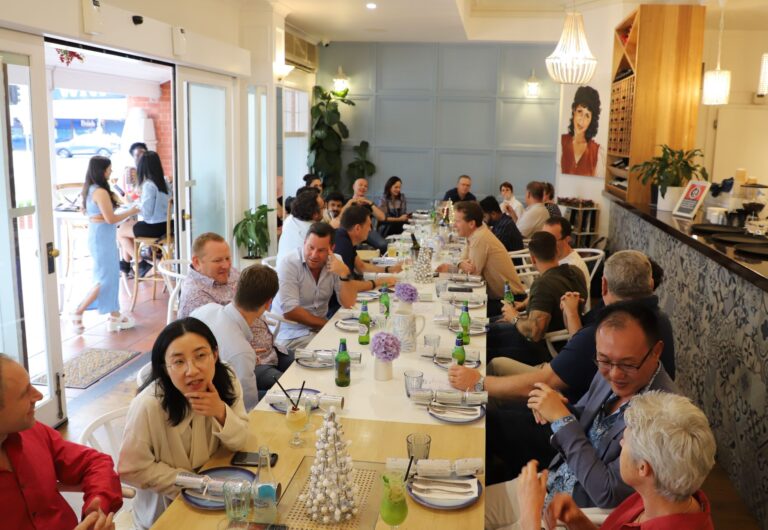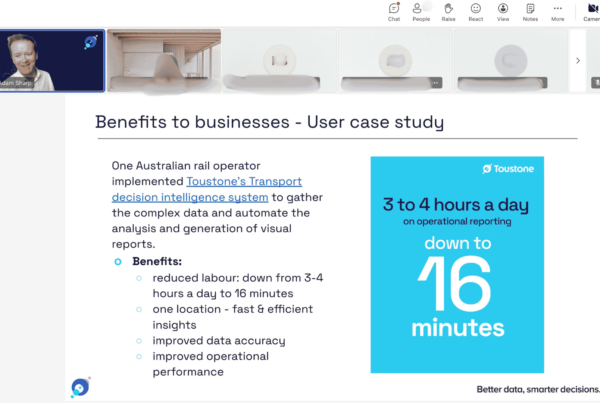
Welcome to a comprehensive repository of decades-worth of business and leadership expertise encapsulated on a single page. Meet Craig Manson, a distinguished Non-Executive Director and Board Chair at Toustone. His purposeful writing serves a dual mission: aiding current leaders in navigating prevalent business challenges and offering invaluable support to emerging leaders.
What you may not know about Craig Manson:
Craig is an experienced Non-Executive Director/Chair and Advisor with over 15 years Board experience across the private sector and 30 years corporate experience primarily at Managing Director and Executive Director level. His background is in technology, banking, financial services, consumer electronics and CPG industries.
In his Board career Craig specialises in guiding high growth businesses, scale-ups and mature businesses seeking to transform and accelerate growth. Prior to this Craig was Managing Director of Computershare Communication Services, Executive Director of Canon Australia and Canon Global Strategic Planning team and Managing Director of Canon New Zealand.
Craig currently sits on five Governance Boards and three Advisory Boards and is a Graduate of the Australian Institute of Company Directors.
Without any more delay, welcome to the 2023 edition of Craig’s insightful reflections. From team dynamics to leadership insights, growth strategies to performance nuances, we are confident that you will relish every nugget of wisdom he shares. Sit back and savour the experience!
Themes
Leadership, Management & Decision Making
1. Tell What. Ask How: Empowering Teams through Clear Accountability
Boards, leaders, executive teams, companies operate at peak performance when everyone understands and delivers on their accountabilities. Everyone.
Too often accountability does not flow down through a team to allow people to do their best work, and that means the leaders end up adopting all the accountability unintentionally. And that does not work.
If we want people to be accountable then we must give them the skills, tools and freedom to get on with it. We have to stop stepping in.
One simple way to do this is “Tell What. Ask How”. A technique developed by Dr Chris Braakman.
Only when Boards and Leaders give clear direction i.e. “Tell What” what needs to be done, and then ask those accountable for delivering “How will you do this” will accountability flow. If we tell what and tell how then we take on the accountability because we have set the goal and set the plan – the person delivering then has a responsibility but not accountability. We have to switch to “Tell what. Ask how”.
The other impact of hijacking someone’s accountability is that we remove their purpose, their ability to master, and their right to perform. So we double down on opening the door to poor performance.
Accountability matters in high performance. It is one of the cornerstones of success.
“Tell What. Ask How.” It is that simple.
2. Go Early: The Boldness Required for Better Business Performance
A critical challenge for Boards, Chairs, CEO’s, C-Suite – is how bold do we need to be in order to create better business performance, and how quickly do we need to move to maximise outcomes.
The first part of the challenge on boldness is risk vs reward. Boldness is relative to business needs, market dynamics and customer demand. Not necessarily in that order.
The second part is how quickly ‘change moves’ can be implemented in a manner that serves the interests of all key stakeholders.
In a 2019 McKinsey report on the most effective and successful CEO’s, one of the key attributes was making bold moves early. Their research was clear, the leaders that won most often made their moves early.
How early?
I think the answer is as early as possible without negatively impacting the quality of delivery, of the outcome. Making sure we do the work to gain the insights and make clear and correct decisions is non-negotiable, rushing decisions, forcing decisions, being rash is unacceptable. Once this is done, then move. Of the major decisions and moves I have seen over my career, in retrospective reviews we hear far more often “I wish we had done this earlier”, than “I wish we had waited”.
3. Two Horses, One Arse: Decision-Making Dilemmas in Business
We “cannot ride two horses with one arse”. This is especially true when at the finish line, when at the pointy end of a business transaction, when the final decision is needed, when someone simply has to make a call. When the decision is important.
Having multiple options is really useful, almost critical, in many facets of business and in times of normal business cadence – but there comes a time in almost all engagements when a decision has to be made, when commitment is needed.
The word decision has latin roots and literally means to ‘cut off’ – cutting off other options. So how to decide?
As the “founder of modern management” Peter Drucker wrote “Effective executives do not make a great many decisions. They concentrate on what is important. They want impact rather than technique. And they want to be sound rather than clever.”
According to Drucker one of the critical elements of decision-making is “Deciding what is ‘right’, rather than acceptable.”
In current leadership parlance this means;
· Making sure the decision meets your core strategic objectives
· Meets the needs of key stakeholders – customer, team, shareholders
· Any compromises do not dilute your core objectives or the proposed solution
· Fits in with the culture and values of your organisation
· Can be actioned effectively and has action embedded in the decision
At the end of the day, we have to decide what course of action to take, because we cannot do everything. We cannot ride two horses with one arse.
What are the elements of decision making your organisation uses to make effective decisions?
4. Impact Lasts: The Enduring Legacy of Effective Leadership
I was doing a one on one session with a MD last week.
We discussed three principles and I used examples and learnings from three leaders I loved working with and respected. Then it hit me. Like a bloody great thump to the chest. All three are no longer with us. I wished I could have told them how much impact they had and how their wisdom is being passed on to new generations.
There are a few simple lessons here:
⁃ Curate the wisdom of others and make sure we pass on this counsel to help create better leaders
⁃ If we have someone we love working with, let them know
⁃ Nourish relationships because nothing is forever
⁃ Respect means we keep their ideas alive
I feel very privileged to be tapping into the wisdom of Dr Chris Braakman, Dave Hynes, Tim Greenhill and ensuring their impact continues. I am privileged to be sharing their stories to new generations of leaders.
What stories have you passed on? What stories do you have that you want to have lasting impact?
And the three principles – ‘tell what, ask how’, ‘leaders create shadows’, ‘when on top of your game, raise your game’.
5. Multiply! Don’t Subtract: The Leader’s Role in Enhancing Team Effectiveness
Last week I was listening to a podcast where the concept being discussed was that the leaders role is to multiply the effectiveness and skill of their teams. Our role is to add as much value as we can.
Too often as leaders we can be consumers of our peoples time, skills, careers.
We can do this by allowing long and unstructured meetings, not being prepared enough, or not asking quality questions. By asking them to do too many things and not allowing them to focus. By allowing teams to do too much work that won’t move the dial. By not actively coaching them to simple, narrow and get specific.
To be a multiplier for our people we must help them focus, treat their time as a precious resource, be disciplined in what we ask. And rigorous in outcomes and progress.
The idea that we are here to multiply is so simple and so easy to keep top of mind and keep us in the right state. We need to apply multiplicity more.
How does your organisation help leaders multiply effectiveness?
6. You Cannot Pour from an Empty Cup: Leadership Lessons on Self-Care
When leading, you are giving. Giving energy, time, counsel, care, innovation, passion, hustle, direction. Giving from a place of emptiness negates the impact you deliver.
Leadership means unleashing potential, human potential, resource potential, possibility potential, business potential, your potential. This means putting your best self forward whenever you can, wherever you can, consistently.
Our ability to put our best leader selves forward is diminished when our cup is running on empty.
A full cup is full of energy, passion, diverse thinking, curiosity, growth mindset, determination, a strong sense that anything is possible and rigour to raise the standards.
Filling our cup is mostly in our control. The quality of our thinking, beliefs, actions. Our energy. Our discipline.
How do you take responsibility to fill your cup?
7. Two Hearts: Balancing Local and Corporate Leadership Responsibilities
When leading, you are giving. Giving energy, time, counsel, care, innovation, passion, hustle, direction. Giving from a place of emptiness negates the impact you deliver.
Leadership means unleashing potential, human potential, resource potential, possibility potential, business potential, your potential. This means putting your best self forward whenever you can, wherever you can, consistently.
Our ability to put our best leader selves forward is diminished when our cup is running on empty.
A full cup is full of energy, passion, diverse thinking, curiosity, growth mindset, determination, a strong sense that anything is possible and rigour to raise the standards.
Filling our cup is mostly in our control. The quality of our thinking, beliefs, actions. Our energy. Our discipline.
How do you take responsibility to fill your cup?
7. No BS, No Fairy-Tales, No Surprises, No Limits: Keys to Effective Business Management
I was recently asked what are the big no-no’s in business management. Great question.
Here are a few to kick-start the conversation.
No BS – don’t make it up. Most often (but not always) it is okay to say “I don’t know, but I will work it out” just don’t make it up to get out of a tight conversation. Know your business intimately.
No fairy-tales – especially when it comes to forecasting, or when sharing strategy with the team, or your Board. Never with customers – especially when promising outcomes. Data and facts are your friends. And be very careful of allowing extreme theories in the business.
No surprises – communicate well, communicate early. Prepare people for outcomes that may be different from expectations. Learn to take the right risks.
No limits – strategic mindset and the ability to be future focussed while driving the delivery day to day is a rare skill. Think big, play big, go for the gap.
8. Learnings from a Pilgrimage: Business Lessons from the Kumano Kodo Walk in Japan
Having spent four days on the magnificent Kumano Kodo pilgrimage walk in Japan recently, I reflected on some learnings for business leaders.
• Momentum is key. It propels you forward when things seem insurmountable.
• Preparation is critical. Train for the big moments.
• When the journey gets hard, it is only momentary and you will get through it
• Wonder is there in every moment. Be curious.
• Expect the unexpected no matter what you plan for (like losing the sole off my boot). Dealing with the unexpected is a valuable skill.
• Team is everything. Surround yourself with people you value and they value you.
My lasting learning is to simply take a breath, move and enjoy.
Team & Culture

1. Culturing: Traits of a High-Performing Company Culture
A couple of weeks ago, Michael Henderson, Corporate Anthropologist, asked “What are the three traits of a high-performing company culture?”. Here are my thoughts:
1. Rituals, language and symbols matter, make the mundane sacred, have leaders modelling. These practices when done properly embed the behaviour you want.
2. Hustle, discipline, rigour, grit, a shared understanding of the effort required and the sacrifices we will make together for the common good. The expectations of what we will do to achieve high performance (our goals). These elements build the capability, momentum and ‘how to win’.
3. Humility and respect. Built around shared purpose and common values. This includes having fun (lots of fun!)
4. And a bonus – be bold. Reach higher, do the right thing, make big moves. To quote Goethe – “Boldness has genius power and magic in it.”
I love Michael’s three:
1. A culture where they can exercise the ability to make decisions;
2. The knowledge of how to best collaborate with others; and
3. An obsessive commitment to learning.
What are your top three traits of a high-performing company culture?
2. Culture is What You Do: Leading with Behavior, Not Just Values
I am reading ‘What you do is who you are’ by Ben Horowitz (shout out to Ed Bigazzi who gifted this to me).
The concept is not new, people like Michael Henderson have been educating us on this for a long time and good leaders practice this daily – “The behaviour you walk past is the culture you allow.”
What struck me is how detailed the leaders of great cultures go in defining their expectations on what people do and how this level of detail removes any ambiguity and helps teams align. They go far deeper than a set of values.
If you want to sharpen your leadership around culture, or you are not getting the behaviour across your organisation that you want, read Horowitz.
What level of detail do you go to, to help culturing thrive?
Growth & Innovation

1. Nothing Changes Until we Do: A New Year Reflection for Personal Growth
As we move quickly to close out another year, it seems like a human tendency to look forward to a new year with optimism and an expectation that next year will be better. And we hope it is too.
In reality nothing magical is going to happen over the holiday season to change the nature and flow of the markets. Our businesses will not show up after the first day of leave with all their problems solved. The issues we face today won’t be sorted out by Santa’s elves.
However we can change what next year brings by making sure we bring the best version of ourselves back from holidays, that we are prepared to raise our expectations and assert ourselves, work harder on our performance in our chosen professions, have a mindset tuned to growth and open perspectives. Knowing what great looks like, and knowing what fun looks like.
The change we want is the change we need to have inside us. A better next years starts with us. Nothing changes until we do.
Well, that is what I am telling myself this year.
2. Wolves Don’t Lose Sleep over the Opinion of Sheep: Crafting a Resilient Reputation
Some opinions matter, some don’t. Ultimately, it is our opinion of ourself, and how we behave to our standards that matters most in building, maintaining, growing our reputation.
We should know whose opinion of us is important and work out how to engage more deeply, at the same time filtering those opinions that do not serve us. This is crucial for our mental well-being, crucial for growth, crucial because we can work harder on our reputations and opinions with those we care about.
Wolves don’t lose sleep over the opinions of sheep. We should curate whose opinions matter and allow us to thrive. And engage them fully.
3. Tyranny of Incumbency: Challenges and Opportunities in Changing Markets
Change is hard. Especially hard when you have a strong and leading market position. When it seems the downside of change outweighs the upside.
The problem with this is that challenger brands (disruptors) are everywhere and as barriers to entry lower, mostly via tech and too occasionally via regulation, the opportunity for challengers grows. Challengers don’t have the downside, it is all upside.
So they challenge and shift the balance of how markets work, the way customers buy, the way they consume, the price they pay, the perceptions of value. And incumbents can get bent.
Boards, Executive teams, CEO’s of companies being disrupted have to make a decision – do we hold firm, do we make incremental movement to block, do we set up a challenger brand against ourself, do we buy the disrupter to try and manage the market, do we go all in and change ourselves based on deep customer insights.
Remembering change and disruption can be micro at first. And large scale in the end.
The way forward has to be having deep connections and insights into customers, todays customers and tomorrows customers. To work tirelessly with partners and providers to always be looking for better ways. To have a growth mindset and have curiosity and innovation in your cultural DNA. To have a values set that says we are okay to be uncomfortable to stretch ourselves and raise our standards. To have leaders that are prepared to be unreasonable. Be prepared to earn the right to engage customers for the long term.
If we decide to self activate change in a mature organisation we need to prepare. Scott Galloway talks about Zealots in the disruptors and Pragmatists in the mature organisations. He is absolutely right. So the challenge is how to have both types in your business – how does a company accommodate both, celebrate both, allow room for success for both. The two are ultimately synergistic, but the pathways are different, skills are different and the risk profiles sometimes polar opposites.
It feels like a challenge worth accepting.
4. Consciously Uncomfortable: Embracing Discomfort for Positive Growth
Raising standards, elevating performance and pursuing growth most often means stretching ourselves and going to uncomfortable places, consciously.
Going to uncomfortable places is tough because it means people have to consciously accept there will be some pain and challenge. Extra effort. Suffering. Anxiousness. Overcoming fear and limiting self-beliefs. Feeling exposed. Doing the hard things that people don’t normally run towards.
Growth demands rigour and discipline. Structure. Sacrifice. Putting in massive effort that no one ever sees.
As leaders it is our accountability to take people to these places. If we accept that the leaders role is to help people achieve their best, thrive and grow, then we must accept that at times we must be more demanding.
Patrick Lencioni calls this unreasonable leadership.
It is too easy to not be unreasonable, too easy to make the excuses that being tough on performance is not okay in modern times, too easy to be fearful to upset people. That is abdicating accountability as a leader.
The trick for leaders is navigating the tension of staying deeply connected with team members they care about while pushing them into discomfort and challenge. The only way this happens is when the push comes from a good place, where the leaders intent is positive personal growth and the desire to help the individual develop. Where shared values, sound principles and common purpose live.
In so many aspects of life gains are not achieved without effort, striving, pain. This is best balanced by being in an environment of trust, feeling safe to try, of care, of communication. It is about balancing being bold and being human.
This is our most valuable work and work we must do more of.
How do you create positive conscious discomfort?
5. The Future is Intimate: Building Trust in a Hyperconnected World
I received three communications last week that at first glance looked like someone had researched me, done the work to understand me. Upon reading more closely there was a clear pattern of scraping data from the web and crafting a note that looked personal and nuanced, but was not. Trust went out the door.
We are living in exciting times with machine learning, artificial intelligence and technology giving business the ability to scale at speed. This allows us to hyper focus on human work.
Human work builds connections and trust, and that is what people, communities, team members and customers seek with brands, business, leaders and relationships.
I love that sales and marketing teams keep trying innovative ways to achieve growth, to revolutionise their approach, but they should first understand their audience as deeply as possible. Work hard to earn the right to gain trust.
How do you build trust in your business, with your customers, team and community?
Performance Insights

1. Velocity Beats Speed: Navigating the Direction and Pace of Business
Velocity measures motion starting in one place and heading towards another. Velocity measures the direction we are heading in and how fast we are getting there.
Speed is the rate of motion, the distance travelled over a period of time.
This requires the question – which is more critical – the direction we are heading in, or the speed in which we do things no matter the direction. The best answer may be velocity with acceleration – moving faster in the right direction.
This is important because how many times do we see teams being extremely busy and seeming to always be going faster and ultimately not progressing strategically. They have speed but no direction, leading to exhaustion, frustration and low performance.
Velocity – knowing we are heading in the right strategic direction at the right pace is fundamental in high performance. Once we have velocity then we can talk about acceleration.
2. Life is a Game of Inches: Mastering the Moments that Matter in Business
The difference between winning and losing, between success and also-ran, between champions and runners-up is often down to a matter of inches in the moments that matter.
Simply put, the biggest achievements can often be decided by the smallest of margins. Margins achieved in the moments that matter most.
And these moments that matter are prepared for by training, discipline, sacrifice and unrelenting persistence to keep going, confidence to get it right, the courage to start.
How do we prepare for the ‘one-percenters’, the small increments that ultimately can sway the balance in the defining moments. What are the micro moves we must take, the distinctions that set us apart.
It is hard to define success as either wanting it more, having more purpose or having more intent.
The difference in the moments that matter most often come down to resilience, fortitude, excellence and preparing to always stay in the fight. Practicing daily what it takes to make the most of the smallest of margins. Understanding intimately what we are prepared to sacrifice to succeed. Having the mindset of doing the extra hard work to make the difference.
What do you see as the key elements in creating the moments that matter, finding the extra inches?
3. Want is Needed More Than Need: Moving Beyond Compliance to True Sustainability
Recently I attended several summits, conferences, workshops and meetings that have a clear focus on climate and sustainability.
It is a quickly changing landscape and the term ESG which was front and centre most recently has been replaced in common conversations with sustainability, climate and carbon.
I think a lot of this change comes from the soon to be introduced mandatory climate disclosures driven by the Australian Government. The need to focus on climate and carbon is being propelled forward because from FY24 the first cohort of companies must start reporting under proposed new guidelines.
The move to mandatory reporting is a good thing, and many people consider we are a bit too late to this particular party in Australia. But it is a start.
The fear I have from attending all these events and participating in the debate is the sense I get that there will be a significant amount of compliance box ticking by companies, and not enough deeper stretching in how to make change and a more positive impact. I understand that reporting is the first step, but if this is coming from a ‘need to comply’ rather than a ‘want to make positive change’ then we are not doing enough. And we have missed opportunity.
Attending and participating in these events has galvanised further my belief that taking bold steps to be more sustainable in business, is also very good for business, its top line, its bottom line, its teams, its customers and its shareholders. The environment. The planet.
4. Hustle and Flow: Balancing Active Pursuit and Harmonious Progress
Flow is the ultimate state. When, when everything just works in harmony, is synchronous. Flow does not happen by accident. Effort, planning, co-ordination, collaboration and luck all play a part. It is hard to achieve and harder to maintain. Flow helps deliver the key driver of business, momentum.
Hustle is an enabler of growth, of achievement. It is a highly active state. Hustle requires energy, commitment, rigour, discipline, discomfort. Pushing harder and doing things that scares you.
We need both. The skill is in knowing when we need to hustle more and when we need to let flow happen. Personally, I love both, the magic of flow and the challenge of hustle.
To me it feels like hustle is a very conscious state, a constant work in progress and ultimately, I believe that hustle creates the opportunity for flow to happen, especially when it comes to teams.
The formula needs to be hustle before flow.
How do you manage your hustle and flow?
5. Triple Play: Pursuing Growth, Profit, and Sustainability Simultaneously
Growth, Profit and Sustainability – can you have it all? Can these three thrive side by side in harmony?
McKinsey released an article recently proving that some top performing organisations in revenue growth and profitable growth metrics were also top performing in ESG metrics. They called this the triple play.
Revenue Growth + Profit + Sustainability = Outsize Returns.
McKinsey identified five activities of these outperforming companies;
1. Integrate growth, profitability, and ESG into the core strategy. ESG is not a side hustle, it needs to be deeply ingrained into growth and profit strategy.
2. Innovate ESG offerings to drive value creation. Innovation and product development is crucial.
3. Use M&A to capture profitable ESG growth pockets at an accelerated pace.
4. Report and communicate transparently. Get data right and communicate it well.
5. Embed strategic priorities in the organisational DNA. Have a plan, clear accountabilities and incentives. Measure rigorously.
This is a long-term play, and easier said than done. However the benefits of maximising performance, while doing good for people and planet has to be worth pursuing. Surely.
Does your organisation have ambitions to deliver a Triple Play?
6. Turkeys Don’t Vote for Christmas: Finding the Right Places to Play and Win
Asking customers, business partners, team members to do something that is inherently against their interests is a difficult proposition. Especially when all the perceived upside is yours not theirs.
Yet leaders, salespeople, marketers do this all the time. And we wonder why teams don’t perform or buyers drop out of the sales cycle.
Being blindsided by push back means we don’t understand the audience and have not taken the time to walk a mile in their shoes or earned the right to engage.
If your customer cannot get to yes without enduring some psychological pain then you are doomed to sales pipeline hell.
The early options would appear to be change the ‘ask’ to something more compelling, add more incentive, give more context and meaning, find a new audience, find the right buyer. Very rarely does it mean just pushing through.
High performance requires that we shouldn’t play where we cannot win.
What other ways have you found success in finding the best places to play and win?
*Turkeys don’t vote for Christmas saying courtesy of my old boss Dave Hynes. Legend.
7. Will It Make the Boat Go Faster?: Strategic Decision-Making in Business
Sir Peter Blake, NZ’s great sailor, around-the-world champion, America’s Cup legend, eco warrior.
When preparing to defend the America’s Cup, the team had to be super focussed to win. Extremely disciplined in what they do, and what they would not do. Rigorous in activity that drove high performance and discontinuing process, patterns, habits that did not serve them. They knew they had to innovate and reimagine everything about Americas Cup sailing.
Sir Peter’s famous strategic question, whenever his team asked about doing something was simple. “Will it make the boat go faster”. If the answer is yes, then let’s do it, if no then let’s not.
The simple discipline in strategic decision making from one question led to high performance. And winning.
What question do you ask your team when decisioning around high performance?
8. Bold Asserts, Human Converts: Blending Boldness and Humanity for High Performance
High performance demands boldness. Bold means finding different and better ways to do business. Bold means to raise the standards. Bold means to hunt for innovation in product, in markets, in process, in the value chain.
Bold requires risk. Bold requires rigour. Bold requires discipline. Bold asserts.
High performance necessitates being human. Being human means listening, consideration, coaching, caring, creating space for team growth. Lifting personal capability in the team and understanding what it means to deliver in detail.
Human shapes delivery. Human shapes behaviour. Human shapes culture. Human converts.
The art of leadership in a high performing team is to make these two work in harmony.
It is not always easy, I got the mix wrong more times than I care to remember. But when our teams got it right it was magical. We won big. We had fun. We helped each other grow. And built a culture that endured.
Be Bold, Be Human.


